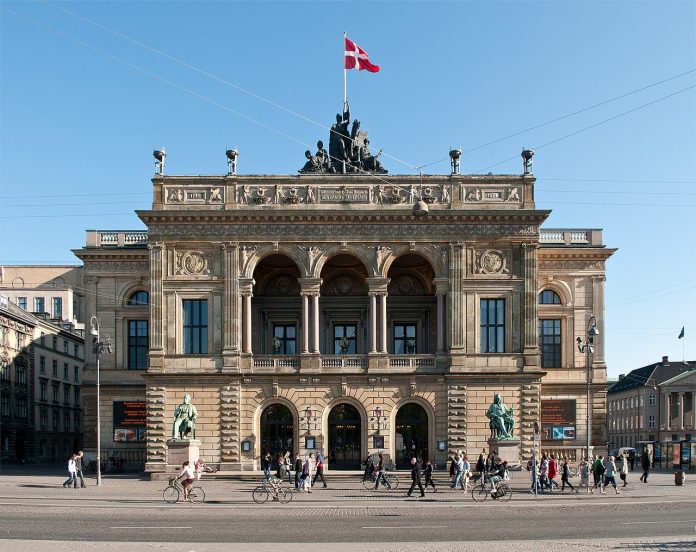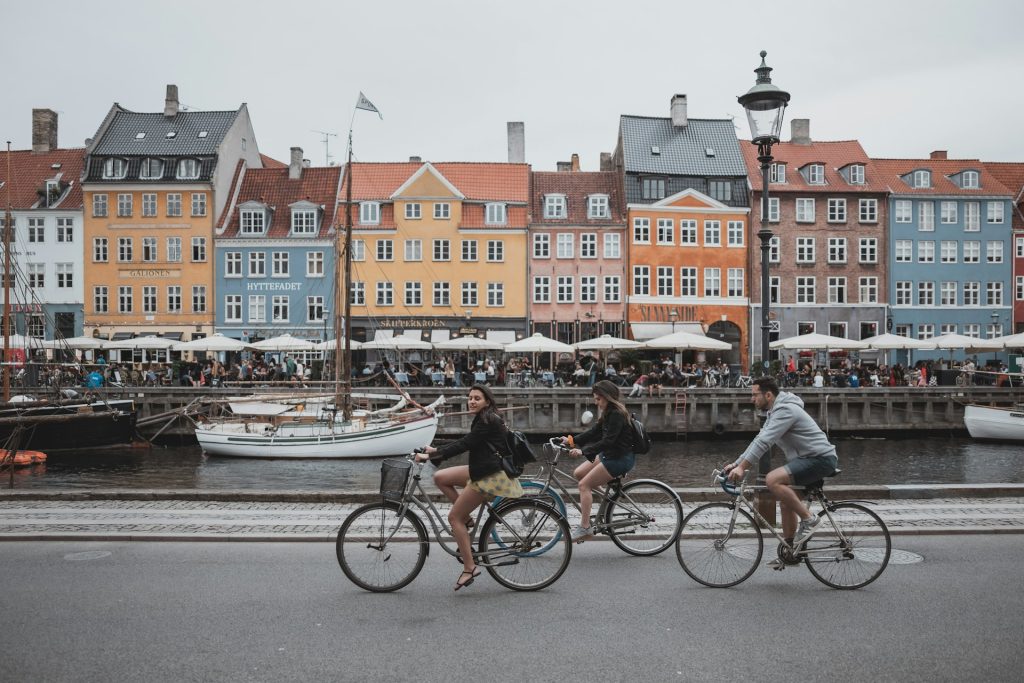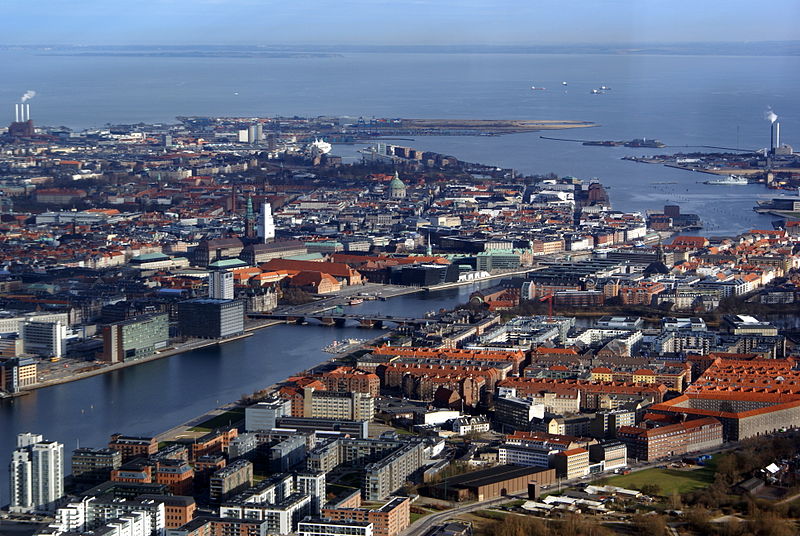
Denmark’s capital city stands out as an international leader in sustainable development.
Strolling through the historic streets of Copenhagen, visitors may find their eyes drawn to crowds of cheerful cyclists on their daily commutes, swimmers enjoying a dip in one of the many harbor baths, or residents enjoying a breath of fresh air at one of the city’s picturesque parks.
Caught up by the sights and sounds of the city, visitors may not notice the Google Street View car rolling through town, equipped with an array of technologically advanced air quality measurement sensors which detect a number of particles like black carbon (soot), fine and ultrafine particulate matter, carbon dioxide, and nitrogen dioxides. Tucked into the heart of the city, they may also look over Copenhagen’s Street Lab, a center for public-private partnerships and a living test area for cutting-edge smart and sustainable technologies.
Amongst the countless coffee shops and eateries that have brought the city international acclaim, vital work is being carried out by scholars and policymakers to make Copenhagen one of the most sustainable cities in the world.
Recent reports call Copenhagen one of the ‘coolest’ cities to visit in the world, and since 2014 the city has earned countless accolades, such as being named the European Green Capital by the EU and the “Most Livable City” by Monocle.
These awards have been earned for success in a number of sustainable development initiatives, ranging from advanced air quality measurement systems, to the implementation of smart street lights, and the promotion of alternative forms of transportation like cycling.

Copenhagen is especially remarkable for its commitment to clean air through ‘Project Air View,’ a unique partnership between Google, university researchers, and the local government. From 2018-2019, a Google Street View car, equipped with air quality measurement technology developed by researchers at Utrecht University, rolled through the streets of Copenhagen to collect information on pollutants in the city’s air.
Dr. Roel Vermeulen, Professor of Environmental Epidemiology and Exposome Science at Utrecht University, noted this project “is unique, because it allows us to use actual measurements at street level to map air pollution at an unprecedented resolution in an entire city. This wealth of data will help us to better understand what drives air quality in Copenhagen and what improvements we can make.”
In the years that have followed since Project Air View, leaders and researchers in Copenhagen have developed new programs and more advanced technologies to continue monitoring and improving air quality. Since 2016, the city has worked with private firms to develop small, portable measurement devices that can be moved quickly in order to monitor air conditions across Copenhagen. These devices, and the data they collect, have played key roles in informing the decisions of policymakers and promoting legislation that seeks to cut carbon emissions and promote clean air initiatives.

In order to cut greenhouse gas emissions and improve air quality, leaders in Copenhagen found a solution through the development of a sustainable system of transportation. The city is home to an advanced smart mobility network, which combines cutting-edge technology with sustainable development goals to promote a cleaner, healthier lifestyle for residents. The core of the sustainable transit movement in Copenhagen is cycling. The city is home to more bicycles than automobiles, which has compelled leaders to embrace cycling as a sustainable transportation solution.
Since the early 2000s, city officials have worked to support cycling through a number of initiatives that have expanded bike lanes, established a bike-sharing program, and made cycling safer. Copenhagen stands out internationally for its ‘Green Wave’ for bicyclists, a program which Dr. Rumia Begum says, “coordinates traffic lights so that cyclists who maintain a 20 km/h travelling speed only see green traffic lights all the way along their commute.” Through increased safety measures and incentives which promote cycling over the use of cars, bikes have become the primary mode of transportation in Copenhagen, and a staple in the city’s sustainable development program.
Another staple of Copenhagen’s sustainability efforts is energy efficiency. The city, which plans to become fully carbon neutral by 2025, has addressed energy concerns by turning towards centralized biomass heating, solar and wind power, and smart street lighting to greatly reduce its energy consumption and limit carbon emissions. More than 98% of households throughout the city are connected to a centralized heating system, and the historic City hall building has undergone renovations which have led to an 80% reduction in its total heating usage. Over 22,000 smart streetlights have been installed throughout Copenhagen, which have the ability to increase or decrease luminosity as cyclists and pedestrians pass by. Since their installation these streetlights have slashed the bill for lighting by 76%.
In today’s society, we find ourselves faced with the daunting task of finding balance between meeting human needs and reversing years of environmental strain. While there may not be a one-size-fits-all solution, current efforts in cities like Copenhagen are establishing best practices which can be applied in urban centers across the globe. There is no reason to wait, as we see through the case of Copenhagen that the key to achieving sustainability in urban municipalities may be as easy as riding a bike.

Christopher Marco (Guest Contributor)
Christopher J. Marco is a graduate student from Michigan studying political science and public administration. He has presented research at the Midwest Political Science and Pi Sigma Alpha annual conferences, and is currently researching sustainable development in urban municipalities around the world.
